
Boundary condition

Posts: 8617 Joined: 30-Aug-2008 Last visit: 29-Nov-2025 Location: square root of minus one
|
Here's the groundwork (attached below) for an idea I've been working on over the summer. At the moment it's looking fairly mundane and unpsychedelic but I intend to add colour and animation as it comes to fruition. The basic premise is the number of closed loops that can be formed which traverse all the squares of a 6×6 array, which was actually inspired by playing with a set of kids' alphabet-and-numbers floor tiles. It turns out the paths form some pretty funky-looking glyphs, so I've slowly been picking apart the rules that govern the formation of a valid glyph - and making sketches of all the permutations. So far, I've drawn 126 of them but I'm somewhat reassured that the total will be way lower than the absolute upper theoretical bound of 6^36 as I'm counting rotations and mirror symmetries as redundant. Once I've developed a clear ruleset this will be used for defining colour palettes and such like for each glyph. The glyphs can of course be assigned unique identifiers systematically, based on their structure. downwardsfromzero attached the following image(s):  20220829_004122.jpg (3,521kb) downloaded 300 time(s). “There is a way of manipulating matter and energy so as to produce what modern scientists call 'a field of force'. The field acts on the observer and puts him in a privileged position vis-à-vis the universe. From this position he has access to the realities which are ordinarily hidden from us by time and space, matter and energy. This is what we call the Great Work." ― Jacques Bergier, quoting Fulcanelli
|
|
|
|
|

DMT-Nexus member
Posts: 4591 Joined: 29-Jan-2009 Last visit: 24-Jan-2024
|
Dang. What a project! That's awesome. I look forward to seeing its evolution!
|
|
|
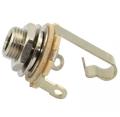
DMT-Nexus member
Posts: 178 Joined: 03-Oct-2021 Last visit: 10-Oct-2024 Location: Italy
|
A very interesting idea! keep us updated, I'm curious to see the final shape.
|
|
|

Boundary condition

Posts: 8617 Joined: 30-Aug-2008 Last visit: 29-Nov-2025 Location: square root of minus one
|
Thanks for the support there, much appreciated. This will likely tie back into the dazzle-matrix project I did a few years back, which is a large part of my current avatar. I may have a break from the pencil and paper and see what it looks like on the computer. Another useful tool in this has been those plastic mosaic beads that you can iron together, whatever you'd call them. Here we call them Hama beads. This makes it very easy to test permutations and in turn helped to reveal a few things about the fundamental structural rules of this concept. Notice in the attached photo that both the path and the dividing lines have two slightly different shades to them. This is for a reason, one which feels 'obvious' once one defines it. So without delving into that in any further detail, the bead pictures are the first iteration of development. Currently I just use the mobile beads as a design tool for sketching onto paper - but of course I could photograph them. I've just enjoyed keeping them outside of electronic media up to this point. What I will do is buy a few extra packs of beads of my own and churn out some glyph tiles to have a play with. This will be my own version of hot plastic- it was Bill's recent 3D prints that inspired my sharing of this project after all. downwardsfromzero attached the following image(s):  20220830_211508.jpg (2,320kb) downloaded 276 time(s). “There is a way of manipulating matter and energy so as to produce what modern scientists call 'a field of force'. The field acts on the observer and puts him in a privileged position vis-à-vis the universe. From this position he has access to the realities which are ordinarily hidden from us by time and space, matter and energy. This is what we call the Great Work." ― Jacques Bergier, quoting Fulcanelli
|
|
|

DMT-Nexus member
Posts: 4591 Joined: 29-Jan-2009 Last visit: 24-Jan-2024
|
That's so very cool! I am totally familiar with these things. My daughter had an industrial sized bucket of em when she was a little kid, and I was always in charge of the ironing.
|
|
|
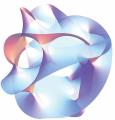
DMT-Nexus member
 
Posts: 4160 Joined: 01-Oct-2016 Last visit: 17-Jun-2025
|
https://youtu.be/JbfhzlMk2eYReminds me of this video! I think you'll. Wonderful project, brother. One love What if the "truth" is: the "truth" is indescernible/unknowable/nonexistent? Then the closest we get is through being true to and with ourselves. Know thyself, nothing in excess, certainty brings insanity- Delphic Maxims DMT always has something new to show you  Question everything... including questioning everything... There's so much I could be wrong about and have no idea... All posts and supposed experiences are from an imaginary interdimensional being. This being has the proclivity and compulsion for delving in depths it shouldn't. Posts should be taken with a grain of salt. 👽
|
|
|

Boundary condition

Posts: 8617 Joined: 30-Aug-2008 Last visit: 29-Nov-2025 Location: square root of minus one
|
Thanks for the link, Void - I think we even discussed it here a while back so thanks for the reminder. I'll take another look at it to see if the maths ( maths  ) relates to my goals in a usable way. [EDIT - it's spot on - and how can I forget how she looks at the camera while saying " I do love it when chaotic things happen...", as previously mentioned.] Bill - my kids love the ironing beads and they've been a great inspiration towards the creativity for all of us. My partner has to do the ironing as I'm somehow too heavy-handed. At least it gets her involved too  (I'll probably have to do my own ironing for this though.) And, once more, I really appreciate the kind words from all of you  “There is a way of manipulating matter and energy so as to produce what modern scientists call 'a field of force'. The field acts on the observer and puts him in a privileged position vis-à-vis the universe. From this position he has access to the realities which are ordinarily hidden from us by time and space, matter and energy. This is what we call the Great Work." ― Jacques Bergier, quoting Fulcanelli
|
|
|
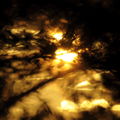
DMT-Nexus member
Posts: 373 Joined: 22-Dec-2019 Last visit: 09-Feb-2024
|
Yes looks like a fun project! And something I would never come up with. I'm impressed.
And your 2-tone colors of the beads, please elighten me to why you've put them alternated?
|
|
|

Boundary condition

Posts: 8617 Joined: 30-Aug-2008 Last visit: 29-Nov-2025 Location: square root of minus one
|
murklan wrote:Yes looks like a fun project! And something I would never come up with. I'm impressed.
And your 2-tone colors of the beads, please elighten me to why you've put them alternated? When rearranging between different patterns, the lightest and darkest beads swap around, while the mid-toned beads remain where they are. The two lighter tones represent the path that passes in a closed loop through each of the points/squares/locations in a 6»6 array; the two darker tones are the result of the spaces between, at least as far as the parameters and originating definitions for this iteration go. (I mean, obviously there's a high degree of arbitrariness in how one represents the consequences of investigating a specific set of instances within a broader class of mathematical phenomena - and here's where I notice how many holes there are in my vocabulary for all this. Clearly, I'm even less of a mathematician than I am a chemist!) Anyhow, I hope that begins to make sense. Meanwhile, I've had a bit of fun with a pixel sketching app and come up with some results that I'm already pretty satisfied with. I'm looking forward to stepping things up a few more levels, and taking the idea into a few other physical media including paint, wood, metal, natural materials... Perhaps it will be possible to stir up a bit of a mystery by leaving glyph formations all over the place...  Coming up are a few examples of the progress with and within the design techniques so far. And earlier today the 128th glyph in the series came into being  I'm pleased because it was specifically design to have - or rather, lack, certain properties. So, should I cut to the chase and post that one first - or would we prefer a montage of the developments? “There is a way of manipulating matter and energy so as to produce what modern scientists call 'a field of force'. The field acts on the observer and puts him in a privileged position vis-à-vis the universe. From this position he has access to the realities which are ordinarily hidden from us by time and space, matter and energy. This is what we call the Great Work." ― Jacques Bergier, quoting Fulcanelli
|
|
|
DMT-Nexus member

Posts: 134 Joined: 14-Jan-2022 Last visit: 05-Oct-2025
|
This sounds like a super interesting project. Have you determined any kind of rule-set yet? Also, you may want to consider mirrors and rotations as distinct, since normal alphabets have it (dbpq). But I guess this is supposed to be a fun project and not the divination of a system for communication 
|
|
|

Boundary condition

Posts: 8617 Joined: 30-Aug-2008 Last visit: 29-Nov-2025 Location: square root of minus one
|
Jacubey wrote:This sounds like a super interesting project. Have you determined any kind of rule-set yet? Also, you may want to consider mirrors and rotations as distinct, since normal alphabets have it (dbpq). But I guess this is supposed to be a fun project and not the divination of a system for communication  Well, kind of mostly yes - I know what the rules are but I don't feel I've rigourously recorded them yet, due in great part to the aforementioned lack of vocabulary but also because it proved to be increasingly time-consuming once there were two pages of forty-eight glyphs apiece to check through them all in order to find out if a newly derived glyph was, in fact, a new instance. This was what led to the pressure of systematisation beyond the initial, far simpler question of how may glyphs there could be. I do accept your point about symmetries and considered it myself; if I get a sensible proven final total number of glyphs I'll be churning a set - maybe more - out in some physical form or other. And since the likely first option will be ironing beads, these will be reversible and rotatable so all the symmetry properties become largely redundant (depending on how far you want to take the divinatory nuances, of course). The orientation pf a glyph does seem to affect its 'mood' so to speak [see attachments, below], so it really is a valid question. But, yes, some (most) glyphs will be multiplied by up to eightfold if all their possible orientations are taken into account. And eight times one hundred and twenty eight... hmmm, let's see.... one thousand and twenty four. I think I might spare myself the effort  - although I did also envisage its potential as some form of systematic ideographic script - like, what if it could be used as a tool for emotional language or something? But an important part of this will be knocking a reliable set of descriptive rules together to provide rapid testability of distinction or identity between any randomly drawn glyphs, as well as to provide a definitive answer to the question of how many of them there are. This latter one would be useful in letting me know when to stop simply doodling  and a means of deriving a specific numerical value for each unique glyph regardless of orientation would facilitate the more complex goals of the project, starting with a link between the numerical value and the colour palette of each glyph. Data inputs could then be used to define glyphs - I'd love to see how a glyph generator might look in response to music, for example. What I do have so far is the beginnings of a notation system that describes the properties of a given glyph, but it is neither comprehensive nor precise so there's still a lot of room for improvement. Here's the first bits of eye candy... downwardsfromzero attached the following image(s):  glyph 109W.jpg (376kb) downloaded 228 time(s). glyph 109N.jpg (385kb) downloaded 228 time(s). “There is a way of manipulating matter and energy so as to produce what modern scientists call 'a field of force'. The field acts on the observer and puts him in a privileged position vis-à-vis the universe. From this position he has access to the realities which are ordinarily hidden from us by time and space, matter and energy. This is what we call the Great Work." ― Jacques Bergier, quoting Fulcanelli
|
|
|
DMT-Nexus member

Posts: 134 Joined: 14-Jan-2022 Last visit: 05-Oct-2025
|
If you can come up with some rules from what you've found, I can work on some algorithmic generation that we can run to test against what you've produced, but maybe that takes away from your project somewhat. I'm not here to take the wind out of your sails, but this kind of thing is super interesting to me.
There are many questions like, do the rules change for smaller arrays? Larger? What's the smallest grid that can produce glyphs? Is there even a rule-set that can be produced that generates these things consistently and exhaustively?
|
|
|

Boundary condition

Posts: 8617 Joined: 30-Aug-2008 Last visit: 29-Nov-2025 Location: square root of minus one
|
Thanks for your input, it's very welcome! Among the squares, six is the smallest that can produce an interesting number of closed-loop glyphs (a square of side four gives only two closed-loop glyphs, although the results become more interesting in this case by dispensing with the stipulation for a closed loop), as well as six being the largest number that produces a manageable number of glyphs  The squares must be even - odd numbers do not give any loops without one square left as a 'dead end'. Again,odd squares could be included through dropping the 'closed loop' rule. I have not examined rectangles, although they do present utility when considering procedural rules for generating a systematic nomenclature or encoding method for the glyphs, albeit in that role necessarily breaking the closed loop rule as well. For larger arrays, an algorithm would be absolutely necessary for their exhaustive generation. I'd more than happy to receive a little help in that direction - my coding skills are sub-vestigial. In between fits of artistic creativity, I'm slowly piecing together a systematic way of describing any given glyph and my intuition tells me this will also give the keys for engineering the necessary universal procedural rules. I hope I'm not reinventing the wheel here - any insights into the pre-existing literature on these kinds of things would also be gratefully received! Have another cookie  ... downwardsfromzero attached the following image(s):  glyph106N.jpg (550kb) downloaded 215 time(s). “There is a way of manipulating matter and energy so as to produce what modern scientists call 'a field of force'. The field acts on the observer and puts him in a privileged position vis-à-vis the universe. From this position he has access to the realities which are ordinarily hidden from us by time and space, matter and energy. This is what we call the Great Work." ― Jacques Bergier, quoting Fulcanelli
|
|
|

DMT-Nexus member
Posts: 4591 Joined: 29-Jan-2009 Last visit: 24-Jan-2024
|
Your math speak makes me feel stoopid, but your passion and supercool expression through art is some magical business. I love it!
|
|
|
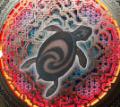
DMT-Nexus member
 
Posts: 560 Joined: 12-Aug-2018 Last visit: 08-Nov-2024 Location: Earth surface
|
This is fun! I think i have an algorithm to generate them from a number. So here's my idea to calculate glyph number n: - Start at top left (0,0) and go right. - At each point, there is 1, 2 or 3 options to continue without causing the closed loop condition to fail or go out of bounds. - Determine which options are legal. Eg. always use a priority of "RDLU" (clock-wise) and filter out the illegal ones. Count the remaining options, let's call that number o. Assign the legal ones numbers from 0 to o-1. - Use integer division to select one of them. So the glyph continues with option n%o (division remainder), and n = n/o for the next decision ahead. So glyph #0 will always take the highest priority legal option. It will go right at 1,0. Glyph #1 will take the second priority option at the first choice, ie down at 1,0, then again always the highest priority option. At 1,0, all even numbers will go right, all odd numbers will go down. And so on. The question now is how to know which moves are legal (without trying them all). I have the suspicion that this can be determined by counting free space in the direction perpendicular to the direction in question but am not sure yet. I'm also not sure if this method produces a continuous range of numbers for all the glyphs, or if there's gaps. I'll have to think about this for a bit. Thought i'd post already, in case this makes things click for someone else 
|
|
|
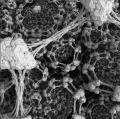
DMT-Nexus member
Posts: 256 Joined: 22-Aug-2020 Last visit: 20-Jun-2024
|
There are simple algos to tile an infinite plane with infinite closed loops, reminds me a bit to this. In this case I guess you could just bruteforce it, there are 6^36 possibilities. Recursion might be a better angle, since you skip any possibility where cells dont connect, kinda like HT suggests, you just keep going until a closed loop happens or cant continue, if the closed loop is exactly 36 cells long its a winner.
|
|
|

DMT-Nexus member
 
Posts: 560 Joined: 12-Aug-2018 Last visit: 08-Nov-2024 Location: Earth surface
|
This is path #0 (for a 6x6 grid) according to my algorithm (the lines are the path, the separators are empty)  Still working on the rules to make it work correctly in general. dfz, if you'd like specifically formatted text output that's easy for you to generate graphics from, i can probably do that. Simplest text representation i can imagine is a matrix of #height lines each with #width letters, that can be l,r,u,d to denote direction of the connection to the next square. So path #0 from the image would be: Code:rrrrrd
ulllld
rrrrud
ulllld
rrrrud
ulllll Homo Trypens attached the following image(s):  glyph0.jpg (9kb) downloaded 160 time(s).
|
|
|

Boundary condition

Posts: 8617 Joined: 30-Aug-2008 Last visit: 29-Nov-2025 Location: square root of minus one
|
Thanks for your efforts there HT! It's akin to at least one of the ideas I've had regarding possible notation; there are several different matrix-based approaches and my observation is that they describe the path from an exterior perspective. Here's another kind of matrix, which describes both the path and the dividing lines: Code:.1.1.1.1.1.1. ._._._._._._.
1.0.0.0.0.0.1 |. . . . . .|
.0.1.1.1.1.0. . ._._._._. .
1.0.0.0.0.1.1 | . . . . | |
.1.1.1.1.0.0. ._._._._. . .
1.0.0.0.0.1.1 |. . . . .|.|
.0.1.1.1.1.0. . ._._._._. .
1.0.0.0.0.1.1 |. . . . .|.|
.1.1.1.1.0.0. ._._._._. . .
1.0.0.0.0.1.1 |. . . . .|.|
.0.1.1.1.1.0. . ._._._._. .
1.0.0.0.0.0.1 |. . . . . .|
.1.1.1.1.1.1. ._._._._._._. There will, of course, always be 36 zeroes (the path being through 36 squares) and 40 ones (the dividing lines including the complete perimeter). Is it a coincidence that their total, 76, matches the calculated number of permutations of one particular group of glyphs ('AF' - see below)? Probably. But for me the biggest question is whether I can 'distill the essence' of some kind of notation in such a way that it eliminates rotational and mirror symmetries. Finding a generally applicable method for defining the start point of any glyph would be one way of achieving this, as long as the path direction can be rigorously set as well. I've now something like right pages of hand-written notes in need of typing up that I'll share in précis form here sometime soon {OK, it seems I've covered most of it in the wall of text that follows...} Mostly I've concentrated on systematically defining what possible glyphs there are that fit the definition 'halvable', which basically means that they have at least one line that cuts the glyph in half which the path crosses only twice. For that analysis I've developed a notation base on where the path crosses the dividing line. These crossing points have been assigned the letters A to F, since there are six possible places (this was done to make it easier to handle the hand drawn notes, rather than for machine-readability). It turns out that there are three main groups of varying sizes: AB, AD and AF. There is some redundancy between and within groups, particularly AF, the largest group. There is another, entirely trivial group, CD, which is wholly redundant because all of the glyphs that meet that designation are also contained within the group AF (unless, of course, I might choose for convenience's sake - or whatever reason - to reduce the size of group AF - and I've been 'I-ching' to tell you this {groan} - from 64 glyphs [to which it was already reduced from 76 possibilities through internal and external redundancies]. That's a bit Linnaean, though  ) The various halves I have assigned, in as near a systematic way as possible, numbers such that each halvable glyph can be defined precisely by this alphanumeric code, e.g. AF(6,4). Halves AF 1 to 6 are asymmetric so their mirror images must also be taken into account, thus AF(6,4m) also exists and has one of its halves as the mirror image of that found in AF(6,4). When two similar asymmetric halves are combined it seems pertinent to note whether they are combined to give rotational symmetry or mirror symmetry, so the codes are, e.g., AF(1,1r) and AF(1,1m). There are four further, mirror-symmetric, AF halves which do not require this symmetry identifier, e.g. AF(10,2). Groups AB and AD can only combine in one way with their respective 'mating types' in contrast with AF's flippability. The redundant group CD is also flippable. Having found 140 unique glyphs so far (and through the systematic approach having noticed and eliminated some duplicates in my original sketches) this highlights the remaining group, for the moment designated 'X', which can be split up into further subgroups using a variation of the A...F notation by splitting off one third of the glyph along a 'valid' dividing line (i.e. one with only two path crossings). In practice, there can be up to three such dividing lines in an 'X' glyph. I define them as, e.g. X(AB/AF) if the splitting lines are perpendicular and X(AD,BE) if the lines are parallel. Perpendicular and parallel division can occur at the same time in a glyph: X(AB,AF/AF). There are some 'X' glyphs that do not contain any valid splitting line; these naturally fall into the category X(X). I'm planning to analyse the 'X' group by splitting the glyphs into quarters and systematically defining all the permissible permutations of these quarters. It would be great if I could think of - or be informed of  - a possible shortcut for this. I shall find it very satisfying to get a final answer as to how many possible glyphs there are. I'm feeling a little daunted about how I'll deal with symmetry questions in the 'X' group, however. I hope this makes sense to at least some of you - I'll add some illustrations to clarify things later on. And speaking of illustration in terms of the project as a whole, if later the animations and colour changes are essential data-defined parameters, Jacubey's point about the validity of including reflections and rotations of glyphs becomes more valid as I foresee this will add to the aesthetic appeal while simultaneously simplifying the task of encoding the glyphs, at the cost of having nearly eight times as many glyphs to deal with. I suspect that defining all the possible quarter-glyphs will help a lot in this direction. I mean, automation of this task is great but I would like to be able to immediately identify glyphs that are congruent despite having a different data identity. “There is a way of manipulating matter and energy so as to produce what modern scientists call 'a field of force'. The field acts on the observer and puts him in a privileged position vis-à-vis the universe. From this position he has access to the realities which are ordinarily hidden from us by time and space, matter and energy. This is what we call the Great Work." ― Jacques Bergier, quoting Fulcanelli
|
|
|

Boundary condition

Posts: 8617 Joined: 30-Aug-2008 Last visit: 29-Nov-2025 Location: square root of minus one
|
ShadedSelf wrote:There are simple algos to tile an infinite plane with infinite closed loops, reminds me a bit to this. In this case I guess you could just bruteforce it, there are 6^36 possibilities. Recursion might be a better angle, since you skip any possibility where cells dont connect, kinda like HT suggests, you just keep going until a closed loop happens or cant continue, if the closed loop is exactly 36 cells long its a winner. Thanks for the link! I would like to use something similar to generate a continuous stream or flowing sheet of random glyphs instead of the hexagonal mazes. This will help develop the animation end of the idea. The glyphs could easily be made to fit an isometric grid which would mean the hexagonal grid would still be useful. “There is a way of manipulating matter and energy so as to produce what modern scientists call 'a field of force'. The field acts on the observer and puts him in a privileged position vis-à-vis the universe. From this position he has access to the realities which are ordinarily hidden from us by time and space, matter and energy. This is what we call the Great Work." ― Jacques Bergier, quoting Fulcanelli
|
|
|
DMT-Nexus member

Posts: 134 Joined: 14-Jan-2022 Last visit: 05-Oct-2025
|
downwardsfromzero wrote:I would like to be able to immediately identify glyphs that are congruent despite having a different data identity. There is pretty simple math that can rotate matrices which runs extremely quickly. The process that makes the most sense to me is to generate the glyphs recursively, using instructions like left, right, up, down as suggested by Homo Trypens. After generation they should be stored in a binary matrix like you have suggested as a good external view. From there you can iterate over the generated glyphs and remove any that have rotational symmetry, and with a little bit of extra work you can also remove the mirrors. What is really interesting to me is that all glyphs are rotatable, but not all are appealing. How do you differentiate between glyphs that are appealing when rotated, vs glyphs that aren't? Assuming we're not brute forcing, has the manual/by-hand system you've devised so far solve for this, or are all glyphs rotatable? Even without a binary matrix, it should be easy to flip/rotate a glyph using left/right/up/down. For diagonal mirror symmetry, invert all the directions. For horizontal invert left/right, for vertical invert up/down. For 90 degree rotations, just rotate each direction. left becomes down, right becomes up, up becomes left, and down becomes right. The dividing line observations are very interesting. I understand what you're saying, but it's hard to visualize.
|